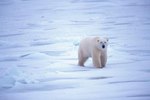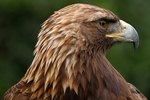
There are at least nine known species of wild geese. In North America, the most abundant species by far is the Canada goose, which is further divided into six subspecies. It's normal for the vast majority of these geese to migrate each year, heading south to warmer climates in the winter and returning to their nesting grounds in time for breeding season. However, one subset of the Canada goose, called resident Canada geese, is non-migratory.
Resident Canada Geese
Most varieties of Canada geese are born in Canada. These geese fly south to the U.S. for fall and winter, and then return to their Canadian nesting grounds in the spring and summer. Resident Canada geese, however, are born in the warmer regions of the U.S. where they find a comfortable climate with plenty of food and water. With all of their needs met, these geese have no reason to leave their nesting grounds and tend to spend their entire lives in the same region.
Reasons
Migratory Canada geese were once an endangered species, having been hunted nearly to extinction by the early 1960s. In an effort to recover the species and rebuild the population, wildlife agencies throughout the U.S. at both federal and state levels began a program to gather eggs from migratory geese and artificially incubate them throughout the U.S. As a result, these new resident geese had no instinctual imperative to fly to Canada or to leave the region in which they were hatched.
Impact
Since the recovery efforts of the last century, the population of resident Canada geese has exploded to the point that it has become something of a nuisance as these geese make their homes in urban and suburban areas. A single goose can produce up to 1.5 pounds of solid waste each day, which carries bacteria, parasites and other pathogens that can be transmitted to humans, including avian flu. The problem is compounded by humans feeding the geese, which both attracts more geese to the area and conditions the geese to lose their natural fear of humans.
Control
Both state and federal wildlife agencies are now taking measures to control the resident geese population. Although hunting migratory Canada geese is still prohibited, hunting resident geese is allowed in many areas during goose hunting season. In many states, landowners are also allowed to destroy nests and eggs found on their property. In addition, people are encouraged to refrain from feeding geese and to take other measures to help discourage geese from nesting in areas populated by humans, including altering landscaping to make the area less attractive to geese, and to use trained dogs, noisemakers and visual deterrents such as scarecrows to keep geese away.
References
Photo Credits
-
Comstock Images/Comstock/Getty Images
Writer Bio
Jean Marie Bauhaus has been writing about a wide range of topics since 2000. Her articles have appeared on a number of popular websites, and she is also the author of two urban fantasy novels. She has a Bachelor of Science in social science from Rogers State University.



